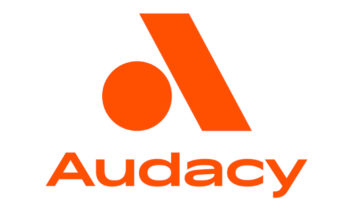Field Report: V-Soft Probe II
Aug 1, 2002 12:00 PM, By Carl E. Gluck, CPBE
The Technical Research Department at Salem Communications employs four people full time, myself included, to do research, FCC application preparation and allocations and acquisition study work. During that time we have purchased several broadcast study software products.
Mutually exclusive FM application studies can be done using the Probe�s contour overlap feature.

The Probe II, offered by V-Soft Communications, is a foundational building block among four or five �must-have� modules for the engineer working to understand and improve the coverage of an AM or FM radio station (other essential tools include FMCont, InterDLG and AMPro).
What it does
The program creates an atlas-style map using several user-selected backgrounds, features and overlays. Interstates, state highways and surface streets all have a distinctive appearance that may be manipulated and enhanced by the user. Feature details change with the map’s scale according to the user’s definition so that maps may show as much or as little as is needed for any particular application.
Performance at a glance
- Professional-looking, atlas-style maps
- Wizard based project startup
- Instant population and demographic reports
- Professional and eye-catching radio coverage maps
- Click and drag two-dimensional path profiles
- Easy contour overlap area and population evaluation
Good documentation and support
Rivers, lakes, terrain and land may be displayed to prepare a professional-looking map with various colors, line widths and font types. A valuable tool in the map creation process allows the user to import a graphic such as a radio station’s logo.
The Probe II also plots coverage contours and field strength predictions once the underlying area map is created. Various propagation models are available, including Line of Sight, Longley Rice, Point to Point, the Terrain-Integrated Rough-Earth Model (TIREM), Okumura/Hata and COST-231-Hata, as are the FCC’s curves [F(50,50), (50,10)]. Any user-defined contour may be created or imported as well.
A wide variety of signal coverage, overlap and interference plots can be created with FCC or user-defined criteria. Two-dimensional path profiles can be created by clicking and dragging map points. Population maps can be created to show demographics by county, Zip code or housing information. AM signal contours can be plotted using imported distance-to-contour (.dtc) files.
How it works
The Windows-based program has a �wizard-style� front end. Users begin by answering several questions or by selecting features. With little more than an FM radio station’s call letters, a map can be created. The wizard provides the setup for coverage or interference plots.
The atlas-style map appears with a cross marker showing the tower site and the station’s call sign. By double-clicking the cross marker the user can pull up (and if necessary modify) any of the transmitter properties. Right-clicking the cross marker offers options such as instantly adding F (50,50) contours and generating population counts. Once a user-defined or imported contour, such as an AM .dtc file or circle contour, is shown on the map, population counts and demographic information are readily available too.
Support and drawbacks
A binder of information is delivered with the product as well as in a Windows help file within the software. The manual helps the user to set up the computer subdirectories and folder hierarchy, and in some cases even test the accessibility of the databases. The only thing lacking in the documentation is a trouble-shooting section that lists some of the common error codes that may be displayed when there is a data error or user mistake.
FCC coverage maps can be made with the Probe�s terrain backdrop.

Problem areas or shortcomings of the software are hard to find. Nevertheless, during the software installation process a person should allow time for an e-mail or call to V-Soft to obtain any missing Windows drivers or a customer-specific software file.
FCC and program databases are updated through the company’s website as often as desired. Program bug fixes, enhancements and upgrades are always posted for download.
The Probe II is not cheap and once you purchase this software you will find databases, add-ons and other tools will become an ongoing habit to feed. All of the software products offered are hardware key locked so they cannot be pirated to other computers or users.
There are a couple of misconceptions about purchasing this type of software. Some believe that if you purchase the software you will automatically gain an easy knowledge about FCC rules and engineering practice. Nothing could be further from the truth. Time must be spent with any allocation software to achieve any level of expertise. Another mistaken notion is that radio evaluation software will eliminate the need to use broadcast consulting engineers. The fact is that as you find the potential to improve and upgrade a radio station a consultant can ensure your success.
Gluck is vice president of technical research for Salem Communications, Camarillo, CA.
field report











